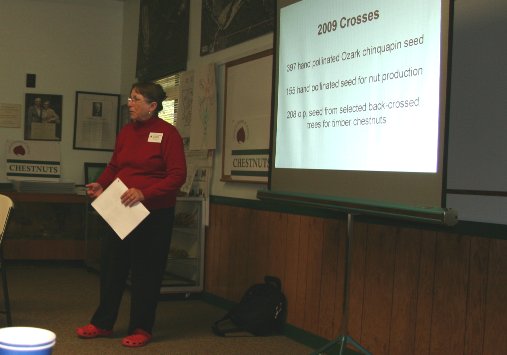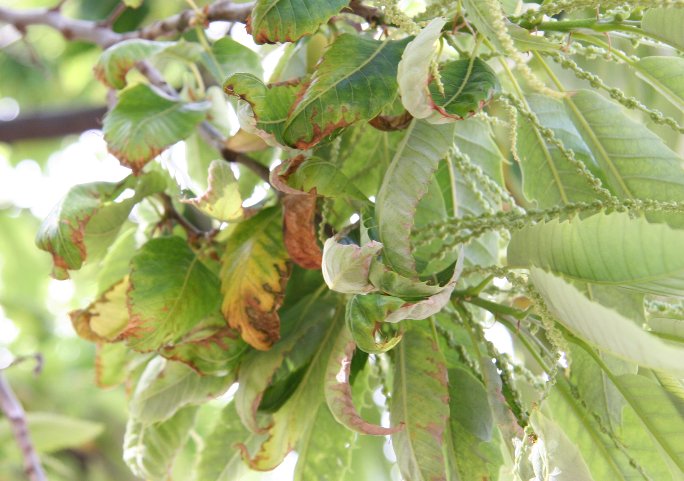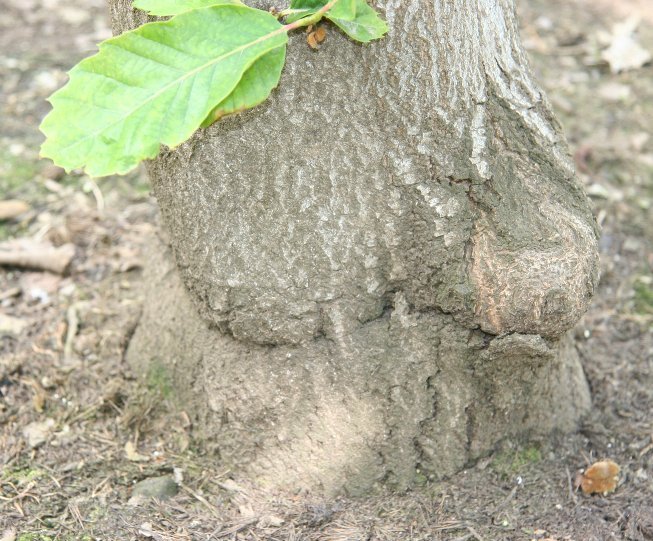| |
This year the attendees had a chance to visit several chestnut farms in
northern Oregon and southern Washington, participate in presentations from
several chestnut experts from around the USA, and do some old fashioned social
networking. About 20 growers attended from many parts of the USA.
Here are some pictures of interest.

Dr. Sandra Anagnostakis presented work she is doing in chestnut breeding at
the Connecticut Agricultural Experiment Station. She does the hand pollenation
of the chestnut tree crosses in a search for better chestnut trees for growers
and forests.

This picture is from a commercial chestnut orchard in Oregon. The trees had
a foliar application of boron of 2 lbs of boron per acre. As the picture shows,
applying boron as a foliar application is not a good idea. Instead, have a
local fertilizer company add a small amount of boron to your fertilizer. Before
doing so, get a soil sample analysis preformed to see if you need to add
boron to the soil.

Almost all commercial chestnut growers grow their chestnuts on grafted trees.
The experts tell us that chestnut tree grafts can have problems. Graft
incompatibility problems can occur anywhere from the time the graft is
attempted to many years later. This picture show a chestnut tree graft union
that is having a problem. The problem is not bad enough to cause the chestnut
tree to have top die back. As time goes on this tree will likely have much
lower nut production and loose its vigor because the nutrient traveling accross
the graft union will be constrained.
|
|
|
|
|
|



